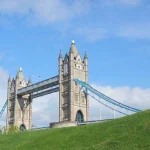Leading strategies UK cities use to boost tourism
UK city tourism strategies focus on city partnerships and collaborations to create a more appealing and cohesive visitor experience. By working closely with local businesses, transportation providers, and cultural institutions, cities enhance their tourism initiatives, providing seamless travel and diverse activities. For example, joint marketing campaigns between cities and regional attractions elevate overall visitor interest.
Another essential approach is urban infrastructure modernisation. Upgrading transport links, pedestrian zones, and accommodation facilities makes cities more accessible and comfortable for tourists. Improved public transit and modernized airports directly support tourism growth by easing travel challenges, a central concern for many visitors.
Also read : What Hidden Gems Are Awaiting Discovery in the UK’s Tourism Scene?
Investment in new cultural and leisure attractions also plays a crucial role. UK cities often launch museums, galleries, and entertainment complexes to offer fresh and engaging experiences. These attractions not only diversify the tourism portfolio but encourage longer stays and repeat visits. The strategic combination of infrastructure and cultural development supports sustainable city tourism initiatives.
Ultimately, these UK city tourism strategies aim to build a dynamic environment where visitors find rich, memorable experiences backed by practical amenities. This balanced focus strengthens the overall tourism sector, helping cities compete on both national and international stages.
Also read : What Hidden Gems Are UK’s Tourist Attractions Overlooking?
Infrastructure and accessibility improvements in major UK cities
Urban development across major UK cities has prioritized city infrastructure improvements that enhance daily commutes and tourism. Transport in UK cities is evolving with significant upgrades to public transport networks, including modernized bus fleets and increased frequency of services. These improvements aim to reduce congestion and encourage eco-friendly travel. Cycling pathways have been expanded, creating safer, dedicated routes that connect key areas efficiently.
Air travel has not been left behind. Expanded airport facilities boost regional connectivity, supporting the growing demand for international and domestic flights. These enhancements streamline passenger flow and integrate transport options, allowing travellers smoother access to city centres.
Importantly, accessibility tourism is gaining momentum. Initiatives focus on making cities more welcoming for travellers with diverse needs, such as improved wheelchair access to public spaces and enhanced wayfinding systems. This attention ensures that transport in UK cities caters inclusively to all visitors, reflecting a comprehensive approach to urban mobility and tourism.
These concerted efforts illustrate how infrastructure upgrades and accessibility developments work hand in hand to transform UK cities into vibrant, easily navigable hubs for residents and tourists alike.
Marketing campaigns and digital engagement in tourism promotion
Tourism promotion in the UK has increasingly relied on digital tourism outreach to connect with global audiences. Targeted digital marketing campaigns enable cities to reach international travelers effectively. These campaigns often use data-driven strategies to tailor messages based on user interests and behaviors, maximizing engagement and conversion rates.
Influencers and social media play a vital role in amplifying tourism messages. Collaborations with popular travel influencers provide authentic endorsements that resonate with potential visitors. Platforms like Instagram and TikTok allow cities to showcase unique experiences visually, encouraging shares and increasing organic reach. This approach leverages user-generated content, making campaigns more relatable and impactful.
City branding and thematic campaigns further enhance the appeal of destinations. By emphasizing distinctive cultural, historical, or natural attributes, cities develop a memorable identity that attracts specific visitor segments. For instance, thematic campaigns centered on food, heritage, or adventure experiences help tourism marketing stand out in a competitive environment.
Combining these elements—targeted outreach, influencer partnerships, and focused branding—creates a cohesive strategy that drives interest and footfall. The evolving landscape of UK tourism marketing demands adaptability, creativity, and a strong digital presence to thrive in today’s competitive market.
Signature cultural events and festivals attracting visitors
In the UK, city festivals serve as significant attractions that boost local tourism draws. These events often include annual music, food, and arts festivals renowned for their lively atmosphere and diverse offerings. For instance, many UK city festivals create a platform where local musicians and artists can showcase their talents, fostering strong partnerships with local artists and communities. This collaboration enriches the visitor experience and ensures the event reflects the community’s unique cultural identity.
Moreover, these festivals frequently emphasize showcasing local heritage through major events, blending traditional customs with modern interpretations. This approach not only preserves cultural history but also encourages tourists to engage deeply with the city’s roots. Events such as heritage parades, folk music concerts, and craft fairs provide immersive ways to connect visitors to the locale’s story and spirit.
By integrating music, food, and art, UK city festivals become multifaceted experiences that appeal widely, making them cornerstone events for local tourism draws. Cities recognize the importance of these cultural happenings, investing resources to maintain and grow festivals that consistently draw crowds and contribute to the local economy.
City-specific initiatives and case studies
Cities across the UK showcase diverse strategies in successful tourism adaptation, reflecting their unique cultural and economic assets. London, for instance, leverages its vast array of attractions through multi-attraction campaigns that boost visitor engagement. These initiatives often include discounted entry bundles combining top museums and landmarks, making cultural exploration more accessible. In parallel, London has focused on museum revitalisation, modernising exhibits and integrating digital experiences to retain visitor interest year-round.
Manchester provides a compelling example of city tourism case studies centered on sports and the creative industries. The city capitalises on its football heritage, hosting major events that attract global fans. Complementing this, Manchester promotes its thriving creative scene with festivals and gallery openings, enhancing cultural tourism and encouraging longer stays.
Edinburgh’s approach to tourism was strengthened by investing heavily in year-round festival programming. Beyond the renowned Edinburgh Festival Fringe, the city has diversified its calendar to include music, literature, and food festivals throughout the year. This steady stream of events helps maintain tourism flow beyond peak seasons, stabilising economic benefits.
By examining these UK city examples, travel planners can appreciate diverse, adaptive strategies that drive tourism while responding to evolving visitor expectations and urban challenges.
Analysis of tourism trends and future projections
Understanding UK tourism trends is crucial to grasp the evolving landscape of city travel post-pandemic. The pandemic altered urban tourism significantly, with many cities experiencing a drop in visitor numbers. However, recent tourism data UK shows a rebound as domestic and international travelers adapt to new safety standards and preferences.
The future of urban tourism appears to lean towards sustainability and innovation. Experts highlight that cities must balance visitor numbers with environmental concerns, encouraging green transportation and supporting local businesses to foster sustainable growth. This approach not only preserves city environments but also enhances visitor experiences.
Projections based on recent visitor numbers and spend indicate a steady recovery, with specific UK cities poised for growth by embracing technology and responsive tourism models. The data reveals rising interest in less crowded urban areas and tailored experiences, reflecting a shift in traveler priorities.
Adapting to these trends requires continuous analysis of tourism data UK, allowing city planners and businesses to anticipate demand and design effective strategies. By integrating expert insights on sustainable development, the UK’s urban tourism sector can maintain resilience and thrive in a changing global environment.


